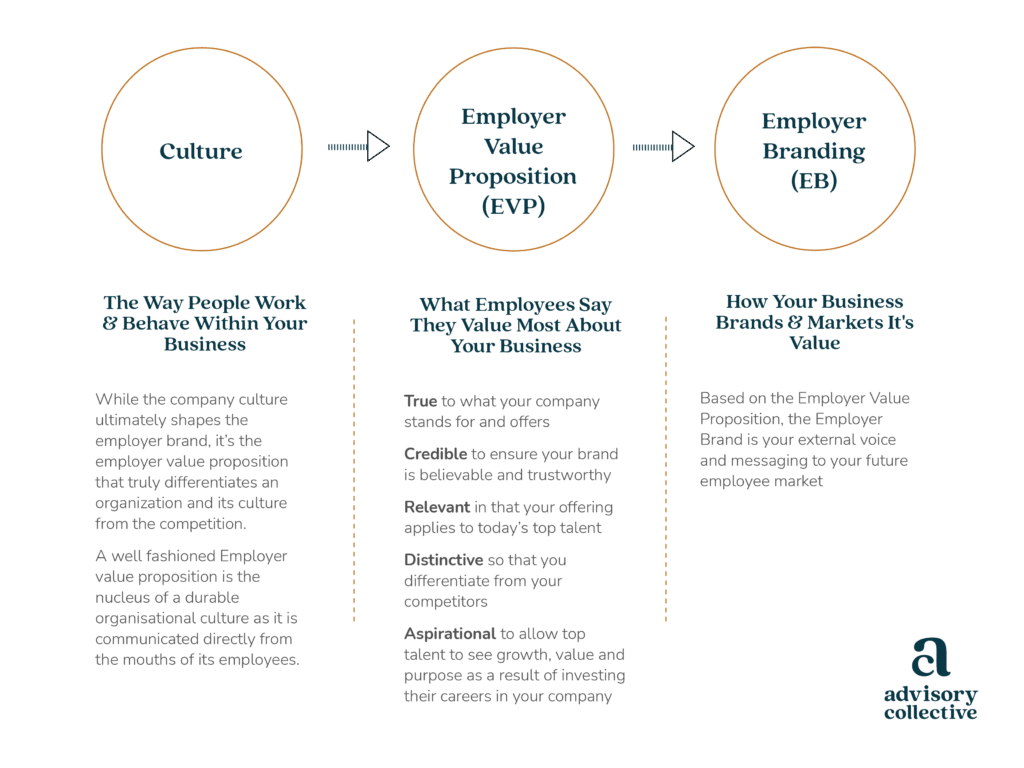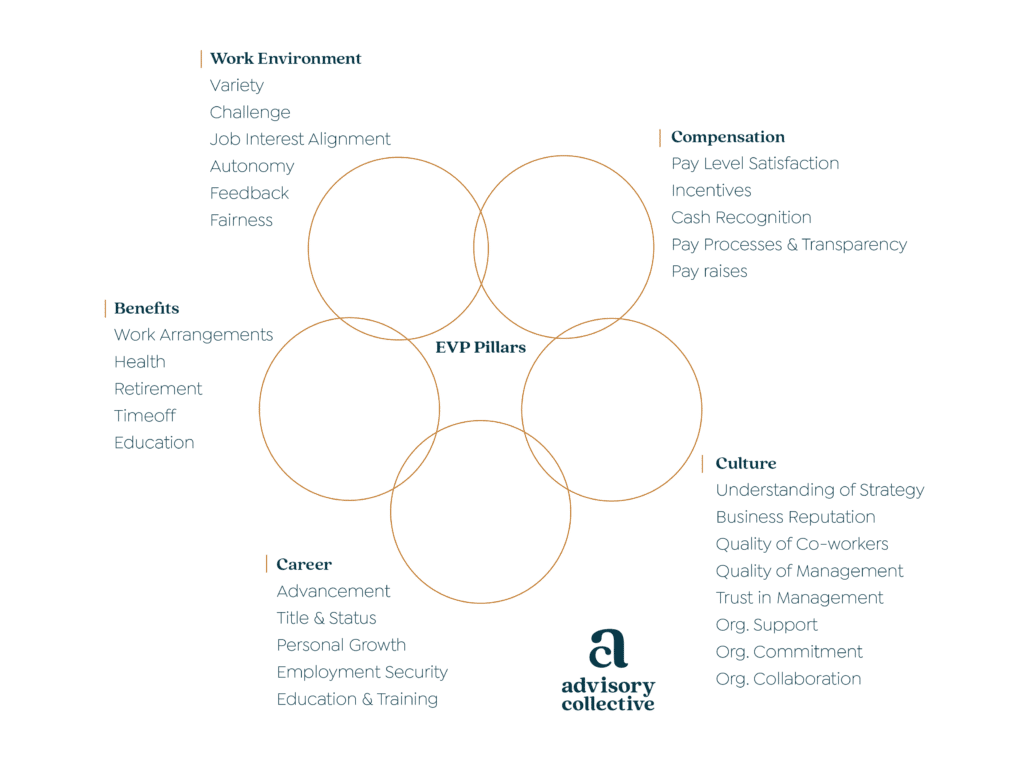
There has been a lot of talk in recent years about Employer Branding, and its potential value when attracting the right talent, especially in a candidate tight environment. Equally, there have been a lot of stories about the importance of having a great “culture” when hiring. I think that both views have merit, but it’s very important to understand how they fit together.
In short, its via your Employer Value Proposition (EVP) – what makes your business “a great place to work”. Your workplace culture is an essential (but not the only) driver of your EVP, which in turn powers your Employer Brand, which needs to be very strong when potential new hires may have multiple offers to compare:

Recruiting aside, having a terrific culture and a strong EVP will also help you to engage and retain your existing people, so that you don’t have to hire so many new people anyway.
Many business leaders think that a good culture is enough to engage and retain their staff, but it is only one of the many drivers of “employer value”. Remember that an EVP has many similarities to a Customer Value Proposition, focused instead on the unique value you create for and communicate to your current and potential employees. And we all know that both customers and employees choose to buy from or work for businesses based on multiple factors, or drivers as we call them – especially when there are many suppliers or employers to choose from.
In the case of an EVP, we classify these drivers under five distinct EVP Pillars, of which culture is only one, although its one that has become relatively more important in recent decades:

And as you can also see, there are actually multiple drivers of culture, so it’s also unwise to focus on just one or two and forget the rest. It’s like a great cocktail – it should be better than “the sum of its parts”, and even one poor ingredient can ruin the recipe.
While Customer Value Propositions and EVPs are similar in concept and arguably equally important – after all, we need great people to create, sell and deliver great goods and services – most businesses still invest far too little energy into both crafting and messaging their EVP. In our experience, many business leaders assume that what they have is already good enough, and that others understand and appreciate it.
Put another way, a CEO might be able to say what is unique and valuable about their business, but how many of their current employees and the candidates they wish to hire can clearly articulate that? And what if they see that value quite differently – might leadership have “blind spots” about how well the EVP meets others’ needs?
So you really need to know where you currently stand with your EVP, and what your current and targeted employees are really after. In tight recruiting markets, everyone is competing for the same talent to progress their businesses forward, so why should someone choose your business over your competitors? You need to regularly test the market and improve your offering, just like you would with your target customers.
Depending on the size and structure of your business, you may need to test and refine your EVP annually. Here are some simple things you can do:
You can easily Google EVP and Employer Branding research to learn about broad market trends. However, there are more effective ways to do this:
Even the best leaders can forget the need to communicate what we are good at, and the most loyal employees can easily forget what’s great about their current employer. It’s good practice to regularly review and test your messaging of why you have a great place to work in staff appraisals, internal communications and team meetings, so that when a recruiter or competitor approaches your best people, they will confidently know why they should stay.
A well crafted EVP provides the best starting point in your hiring process to ensure you are clearly messaging to potential candidates what makes your business unique, in a compelling and relatable way.
It’s a bad idea to come up with a great Employer Brand without doing the EVP work first – both key employees and new hires will feel cheated if their experience doesn’t match the marketing. And if some of your key EVP drivers are weak, eg culture, invest in them now that you know how important they are for both staff recruitment and retention.
If this is your first time crafting or refining your EVP all this might feel overwhelming, so start out with the basics, eg working on key drivers like culture and gathering useful data through a survey. Progressively build on your work each year, perhaps with some strategic advice from an expert.
So if you would like to speak to us about your culture, your Employer Value Proposition or Employer Brand, please book a meeting with us.